Google’s AI patching system fixed 15% of bugs right away. This shows how powerful AI is in making our systems secure. By using smart algorithms, it understands how to fix issues in coding, making our online lives safer. Plus, it saves time and resources for those working in technology.
But, AI-enhanced patching faces its own set of problems. Setting up automated fixes requires lots of testing to make sure they work. Plus, creating the right data for training AI models is tough. Yet, the progress in AI patching shows its big role in keeping our defenses strong.
Introduction to AI Driven Patching
In today’s world, the importance of strong cybersecurity solutions is at an all-time high. AI-driven patching is a new way to use artificial intelligence for finding and fixing flaws in software. It’s a powerful approach that does this job quite well.
What is AI Driven Patching?
AI patching technology uses artificial intelligence to find, study, and fix bugs in software all on its own. It lets systems look for dangers by checking data in a really smart way. Then, it fixes these issues without needing people to step in. This makes AI-driven patching key for keeping things safe and lowering risks right away.
Importance in Modern Cybersecurity
When it comes to cyber dangers, they are getting more and more complex. So, regular methods often can’t keep up. AI-driven patching comes to the rescue by offering automated software updates that are fast and correct.
This not only shrinks the time hackers have to exploit weaknesses but also keeps defenses up-to-date against new threats. Adding proactive cybersecurity measures like AI-driven patching to your setup can greatly boost your system’s strength, making it a must-have in today’s digital world.
The Rise of AI in Cybersecurity
AI is changing how we protect against online threats. It moves us from old ways to new ones. These new methods are better at stopping digital attacks, making our data safer.
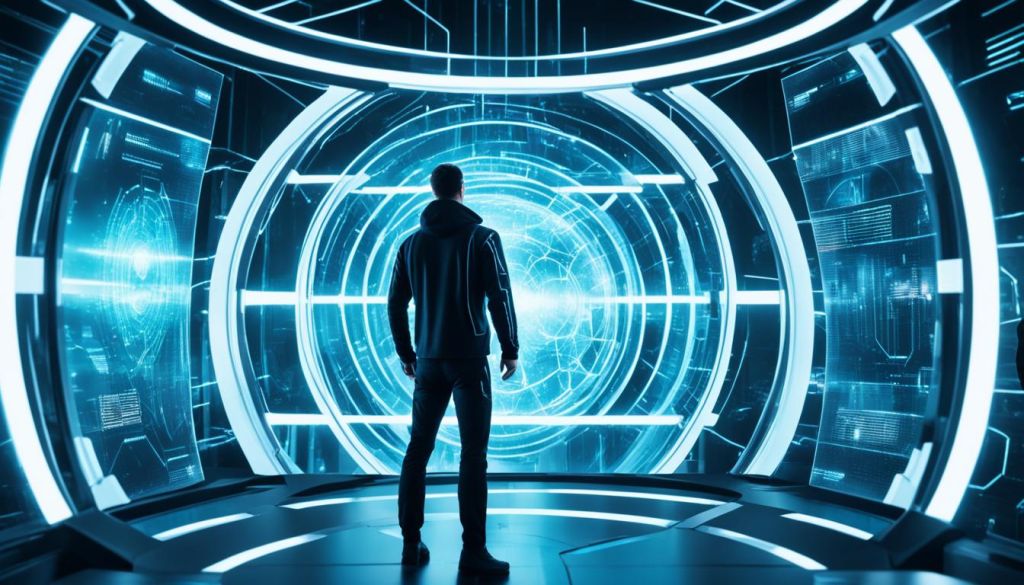
How AI is Transforming Security
AI brings new ways to keep our digital world safe. It’s not just about reacting after attacks, but predicting and stopping them before they impact us. These changes are very noticeable in some important aspects:
- Accelerated Incident Response: AI can find and stop threats quickly, making us less vulnerable.
- Scalability: With AI, we can handle big cybersecurity tasks easily and manage lots of data at once.
- Automating Routine Tasks: AI takes on boring jobs like watching traffic or checking logs. This lets experts handle more complex problems.
- Enhanced Accuracy: AI makes fewer mistakes, making it better at spotting and dealing with threats.
- Refinement Through Learning: AI gets smarter over time. It learns from new data to become even better at protecting us.
Benefits of AI Over Traditional Methods
AI is clearly better than old-fashioned cybersecurity in many ways. It does things faster, scales easily, and makes fewer mistakes:
| Aspect | Traditional Methods | AI-driven Solutions |
|---|---|---|
| Response Speed | Slower, and often by hand | Fast, and done automatically |
| Scalability | Depends on how many people we have | Grows easily with the use of AI |
| Error Rate | Makes mistakes, due to human nature | Uses automation to cut down on errors |
| Learning and Adaptation | Keeps to the same rules over time | Always learning and changing |
As we move towards AI for patching and cybersecurity, it’s clear AI plays a big part. It leads us to stronger and more secure IT systems.
AI Powered Vulnerability Management
AI is changing cybersecurity by making vulnerability management better. Now, with AI tools, organizations can defend against new threats. They use these tools for quick detection, understanding threats, and targeting solutions.
Automated Vulnerability Scanning
AI brings automated vulnerability scanning to the next level. It doesn’t just spot old problems; it learns in real time to find new ones. This means it can catch threats that normal systems might miss. So, your security gets better coverage.
Risk Assessment and Prioritization
Understanding risks and picking which ones to handle first is key to good security. AI makes these steps smarter and quicker. It looks at different factors like how bad a problem could be and sorts the risks. This helps organizations deal with the most important dangers right away.
Mitigation Strategies with AI
After finding and ranking vulnerabilities, acting quickly to fix them is vital. AI tools help make plans to reduce risks and use resources better. Their accuracy means strategies work well, protecting systems from future harm.
Now, let’s look at how AI and older methods match up:
| Aspect | Traditional Methods | AI-Driven Solutions |
|---|---|---|
| Detection Speed | Slower, often reactive | Rapid, proactive |
| Accuracy | Moderate, prone to errors | High, continuously improving |
| Scalability | Limited, manual effort required | Highly scalable, automated process |
Case Studies: AI Driven Patching in Action
Generative AI is making a big difference in cybersecurity. Google has shown how it can quickly and precisely fix common software issues. This success story highlights the power of AI to make our systems safer.
Google’s Success with Generative AI
Google put AI-driven patching into action, using models like Gemini Pro. They fixed 15% of their code’s easy bugs directly. This move cut down on time for attackers and saved the company’s engineering efforts.
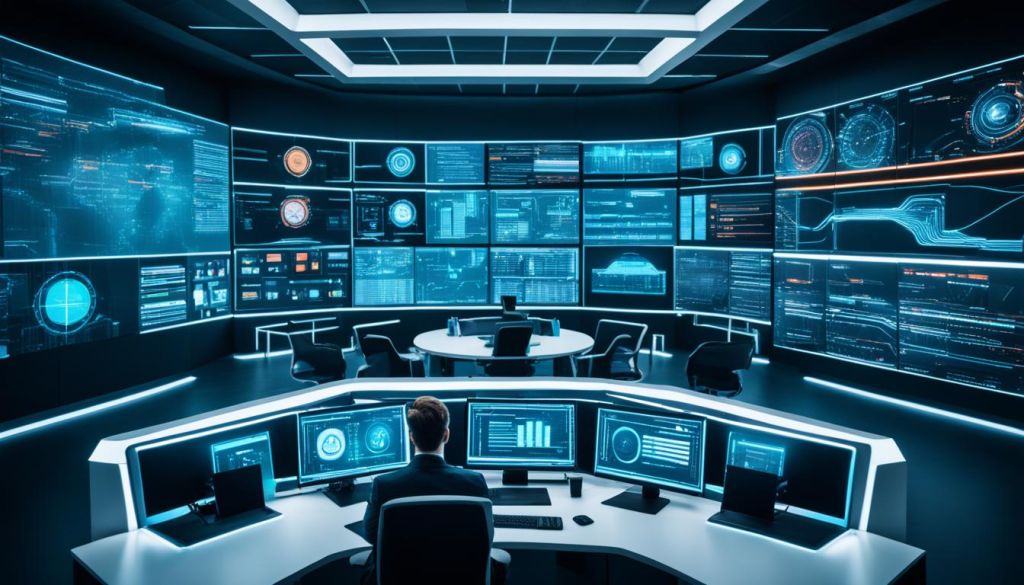
Google used Generative AI to suggest patches that fit their needs. This cut down the risk of human error and made patching more streamlined. Google’s approach is leading the way by proving AI’s value in security tasks.
Other Industry Examples
Companies like Microsoft and IBM are also using AI for patches. They’re seeing great results in securing their software networks quickly. These stories show the wide benefits of using AI in cybersecurity.
The use of AI in security is not just a trend. It’s a real game-changer, helping companies protect their crucial digital systems better. This marks an important step forward in keeping our online world safe.
Advantages of AI Driven Patching
In today’s fast-moving cyber world, AI-driven patching beats old methods by a mile. It makes patching faster and takes less time to fix problems. This boosts a system’s security with greater efficiency.
Speed and Efficiency
AI-driven patching is lightning fast and highly efficient. It’s way quicker than humans at finding and fixing issues. This speed is vital for keeping systems safe from new threats, ensuring strong security, and meeting rules.
- Rapid identification of vulnerabilities
- Quick deployment of patches
- Real-time monitoring and updates
Reduction in Human Error
One big plus is reducing the chance of patching mistakes by humans. Automated patching is simply smarter and more accurate than us. It boosts a system’s security and lets human experts tackle bigger challenges.
Picking the best patching software can mean huge gains. Good software working with your systems can cut down time and make your cyber work smoother.
| Advantages | AI-Driven Patching |
|---|---|
| Speed | Patches vulnerabilities within seconds |
| Efficiency | Automates routine updates, minimizing downtime |
| Human Error Reduction | Eliminates manual mistakes, ensuring consistency |
Challenges and Limitations of AI Patching
AI-driven patching shows a lot of promise. But, there are many hurdles to overcome. One big issue is making sure AI patches are reliable and accurate. This is crucial for keeping systems working well.
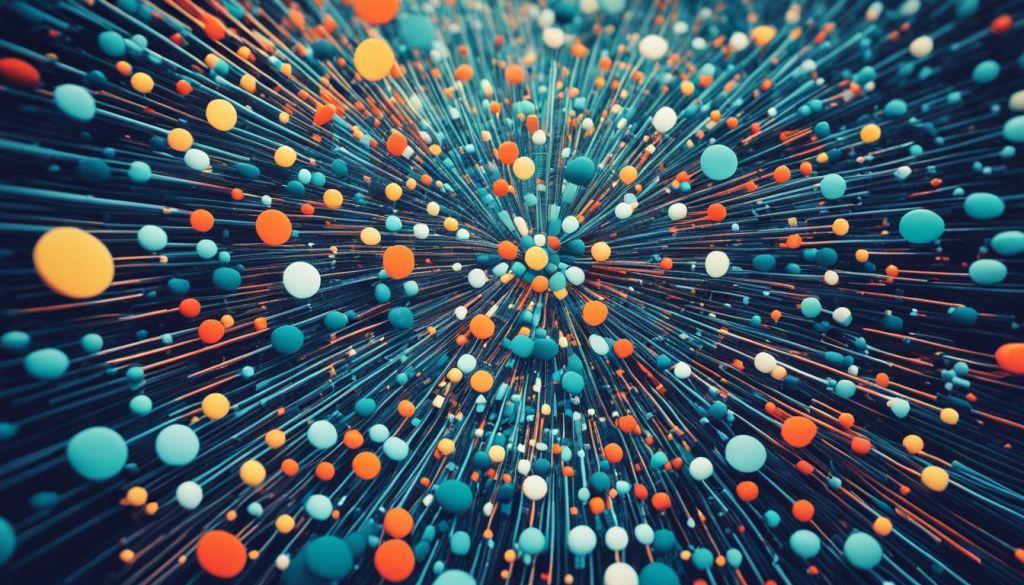
Validation of AI-generated Patches
Validating AI-made patches is hard. It’s important they not only fix problems but also don’t create new ones. We must be sure AI’s choices are correct to avoid causing problems in our systems.
Complexity in Implementation
Patching complexity comes from working with many technology setups. Each one is different. Also, getting enough training data for AI systems is tough. This shows the current struggle with using AI for patching.
An eye on a comparison might show more about these issues:
| Challenges | Description |
|---|---|
| Validation | Ensuring patches do not disrupt functionalities and are effective. |
| Complexity | Diverse IT environments and extensive data requirements. |
| Training Data | Difficulty in generating adequate data sets for model training. |
Future Prospects of AI Patching Technology
AI patching technology is getting better, thanks to new trends that make cybersecurity more advanced. These trends show us how AI is going to change the world of cybersecurity.
Upcoming Trends
One big trend is the growth of smart systems that find security holes automatically. This makes them really good at finding and fixing issues. Also, they will use real-time data to stop new threats on the spot.
AI will get even smarter with new learning tools. This means it can fix problems faster and more accurately. Soon, patches might happen without any people getting involved, making everything work smoother.
Predictions for AI in Cybersecurity
Experts think AI will change cybersecurity a lot. They expect it to become fully independent, dealing with many kinds of threats. It will not just fix problems but stop new attacks before they happen.
AI will blend better with the tools we already have. This will make defense stronger against attacks. It will even help predict how hackers might try to break in, letting us stop them first.
The following table highlights significant predictions and trends in AI patching:
| Trend/Prediction | Impact on Cybersecurity |
|---|---|
| Automated Detection Systems | Enhanced precision in identifying vulnerabilities with minimal human intervention. |
| Real-time Analytics | Dynamic adaptation to emerging threats, ensuring timely patches. |
| Zero-touch Patching | Reduced human error and faster resolution of vulnerabilities. |
| Predictive AI Models | Earlier anticipation and mitigation of potential cyber attacks. |
With these advances, AI in patching is set to bring more efficiency and stronger protection against cyber threats.
Automation and Integration with Existing Systems
AI integration is key for successful patching with AI. It must work smoothly alongside your current cyber systems. If not, your efforts to automate can hit roadblocks, making your system less secure.
Cybersecurity automation is essential. It lets AI find and fix threats quickly. This boosts the strength of your cyber defenses overall.
It’s crucial to check that new AI systems get along with the old ones. This covers both the tech side and how it affects daily operations. With a good fit, AI can make real-time patching work better. This keeps your defenses strong and ready for new threats.
Ethical Considerations and Responsibilities
As AI patches become key in cybersecurity, we must think about ethics. It’s vital to make sure AI works fairly and keeps privacy safe.
Bias and Fairness in AI
AI can carry forward bad biases from its training, affecting patching choices. Desiring AI systems to be unbiased and fair is crucial. We need to openly test algorithms to find and fix biases. This ensures every piece of data is treated fairly.
Data Privacy Concerns
Because AI uses a lot of data, AI data privacy is a huge concern. Protecting private info from outsiders is key to keeping users happy. Strong steps must be taken to keep user data safe during training and use.
| Ethical Consideration | Challenge | Solution |
|---|---|---|
| AI Bias and Fairness | Biased Algorithm Decisions | Regular Audits and Diverse Training Data |
| AI Data Privacy Concerns | Data Breaches and Unauthorized Access | Enhanced Encryption and Access Controls |
Conclusion
AI-driven patching is getting more popular in cybersecurity. It’s important for your organization to use these advanced tools. They help you defend against new dangers by using AI’s fast and smart features.
Managing AI for finding security holes is a key strategy now. It helps deal with the many challenges in today’s cybersecurity setup. AI tools make things quicker, more efficient, and cut down on mistakes. This helps your security setup stay strong and react fast.
Even with some tough issues to solve, AI patching is getting better. It’s coming up with smarter, more precise answers over time. Staying up to date and ready to change lets you make the most of AI. This leads to a security system that’s tough and quick to respond.


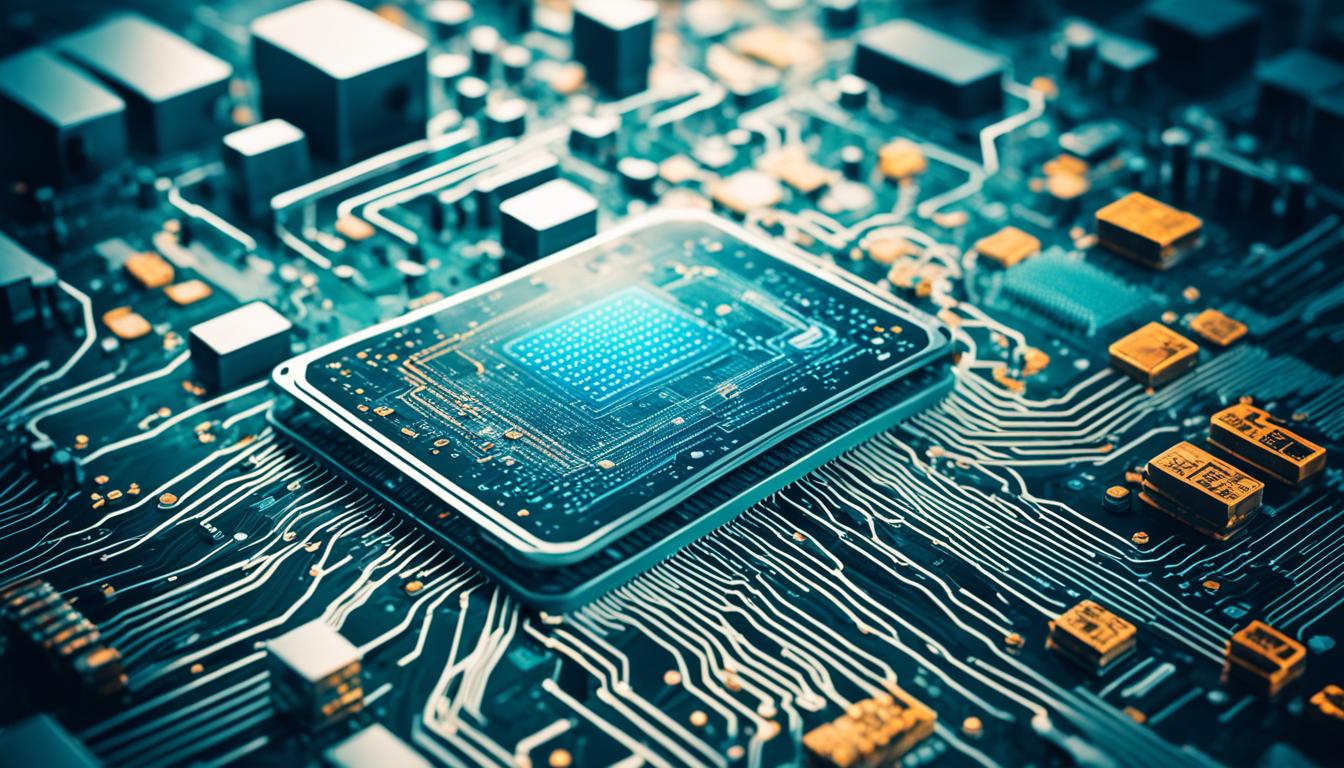

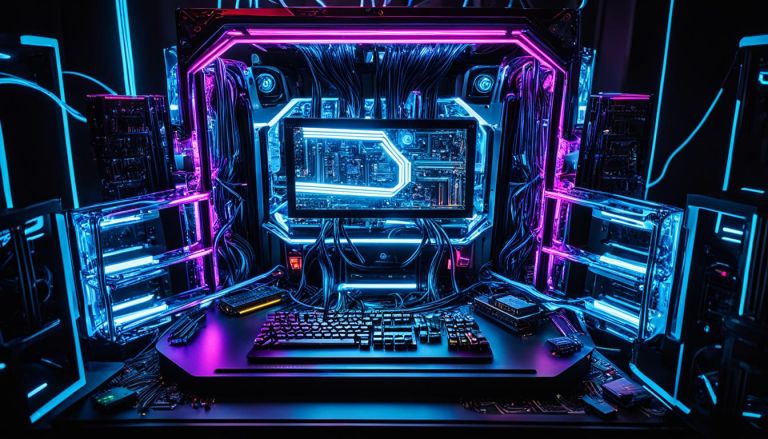
Leave a Comment